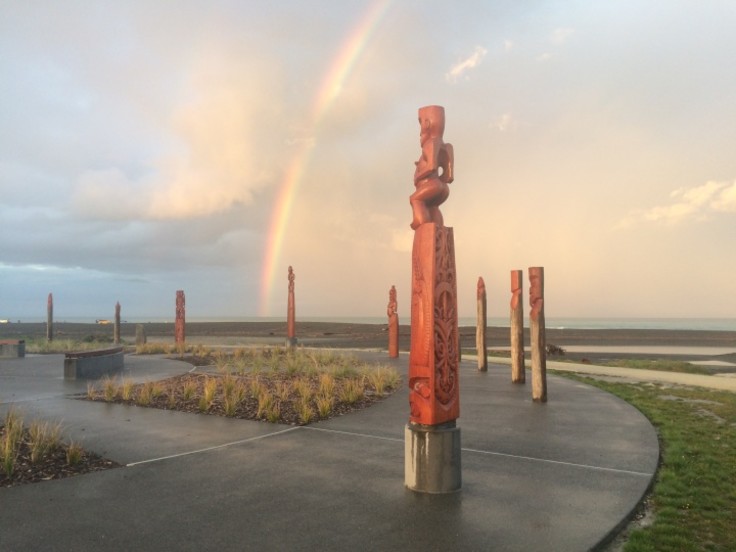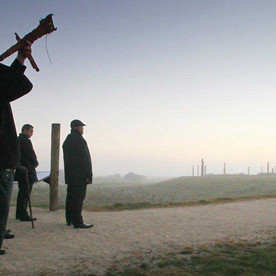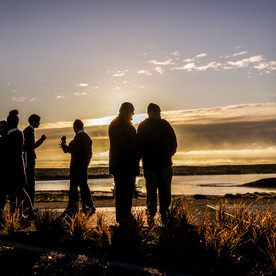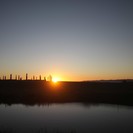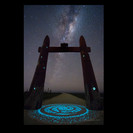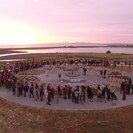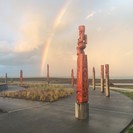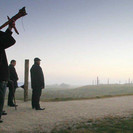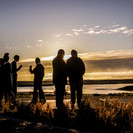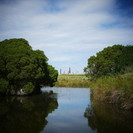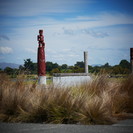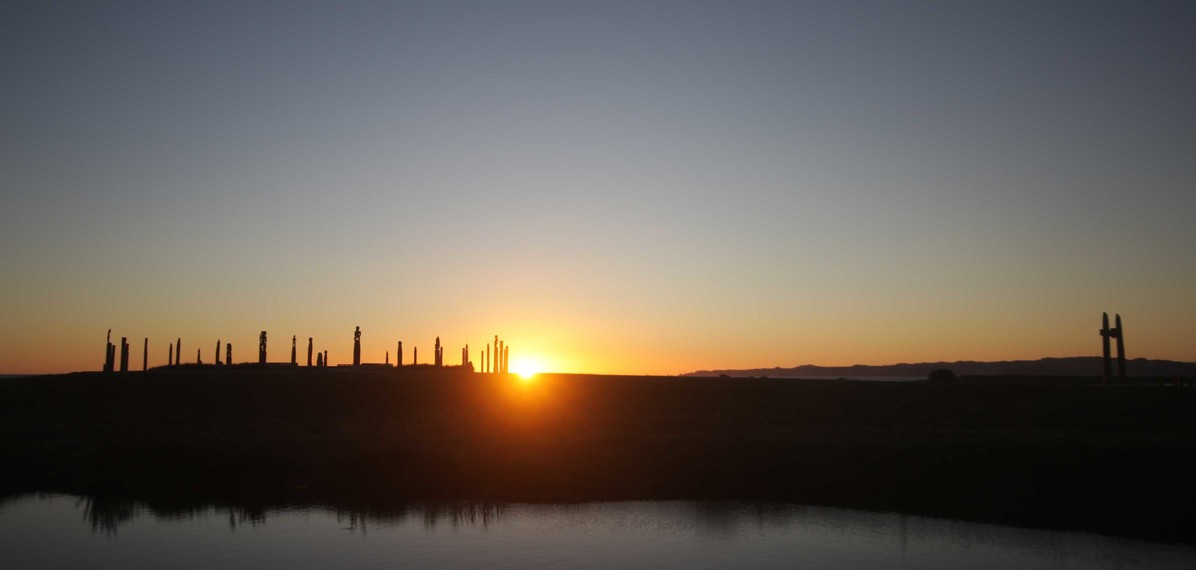
Showcase
- NZILA Category Winner / Te Karanga o te Tui — 2019
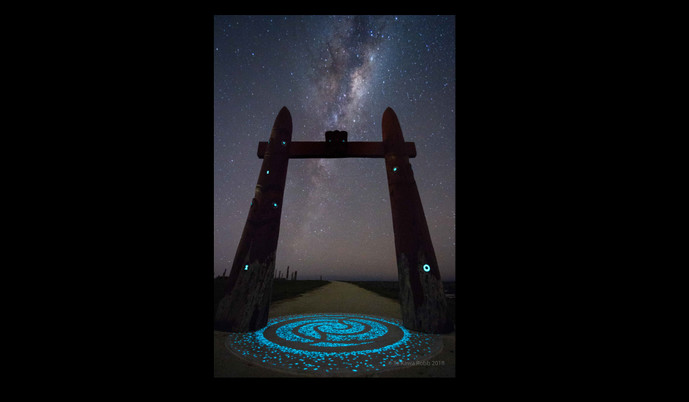
The treaty of Waitangi was signed by local chiefs just off the coast, a former pā was one of the most impressive in Hawke's Bay, and William Colenso had a missionary house here. But the park was an eroded, smelly car park and dumping ground, with no links to its history.
This project has sought to restore mana to Waitangi Regional Park. This first stage (of a significantly larger, long term project) anchors around Ātea a Rangi, an educational star compass. Designed and constructed in collaboration with Māori celestial navigation experts and landscape architects, the compass is a classroom that teaches students how to navigate by the stars. It is set in coastal plantings around tidal waterways that reclaim this precious environment, restoring habitat and biodiversity. Signage helps the uninitiated learn about the history and significance of the site.
Further capital works are planned, but for now Ātea a Rangi stands as a symbol of transformation, cultural value and community engagement. It is a site that has begun a new journey, one that will take many years to complete.
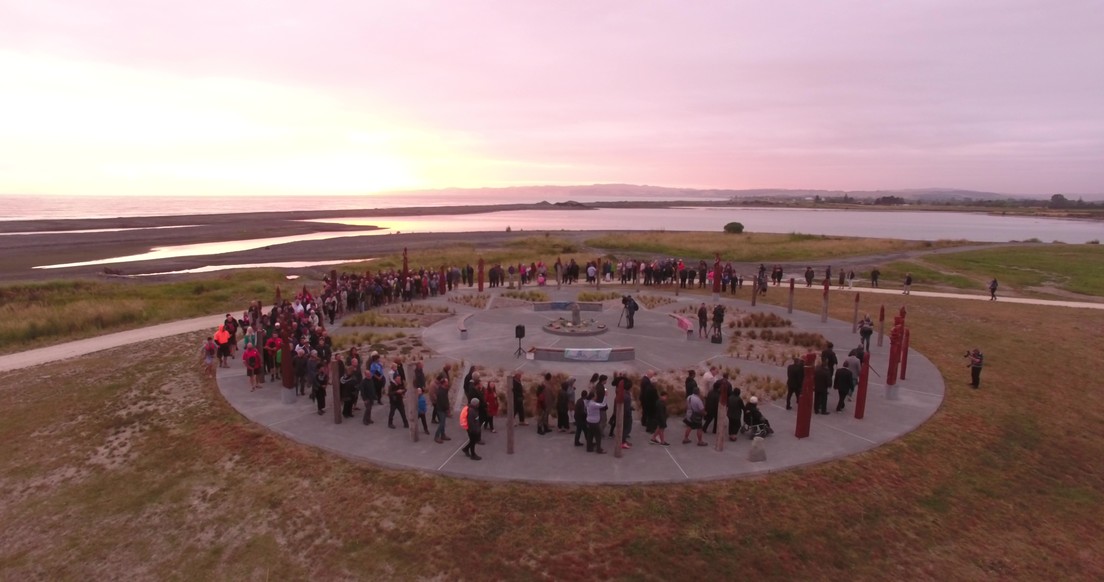
Judges Citation:
Ātea a Rangi Star Compass and wetland restoration is a triumphant cultural landscape and environmental project giving rise to the knowledge and understanding of Māori sky lore. The location at Waitangi Regional Park and the wider coastal shores of Te Moana-nui-a-Kiwa provide a poignant setting to discover and practice traditional Māori celestial navigation techniques. It also provides a place for people of all cultures to reconnect with the natural processes of the surrounding world in the Aotearoa context. The sky, sounds, winds, coastal smells and connections through pou to the greater landscape contribute to a tangible and deeper understanding of Te Ao Māori. The project site, once a car park and informal camping area, was given the goal to create a place that engaged people with culture and restoration of the fragile coastal environment.
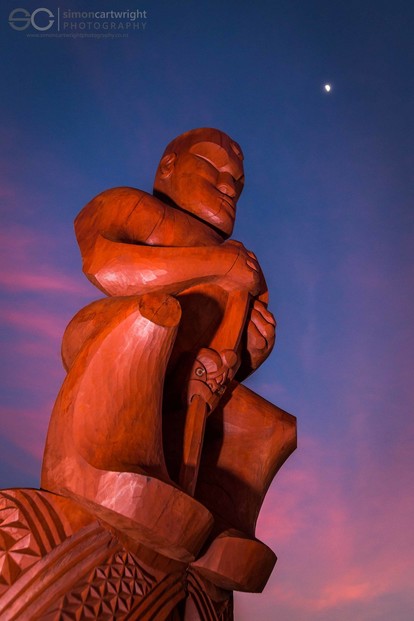
Over three years the Hawke’s Bay Regional Council and its project partners developed a vision, fund raised, and undertook restoration of the coastal wetlands and tidal channels, to restore Mana to Waitangi park. Lead carvers Nathan Foote and Philip Belcher carved the compass, and Piripe Smith who donated his time to the project noted his vision to gather and pass on the traditional knowledge within Te Moana-nui-a-Kiwa and wider Aotearoa. Ātea a Rangi is accompanied with useful and appropriate signage that strikes the right balance between providing enough information without dominating and detracting from experience of the site.
In drawing in the wider landscape, the sky, and creating a space and resource to expand knowledge of Te Ao Māori, the Ātea a Rangi Star Compass project is a worthy winner of Te Karanga o te Tui Award.
Client: Hawke's Bay Regional Council
Company: Wayfinder Landscape Planning & Strategy, Boffa Miskell, Ātea a Rangi Educational Trust
Key contractors:
Ātea a Rangi Educational Trust
Hawke's Bay Regional Council
Nathan Foote and Phillip Belcher
MWH Engineers
Higgins Contractors
Habitat BPM
WSP Opus
Patrick Parsons
Forest and Bird
The Great Give
NKII
Ngaā Hāpu o Tūtaekuri
Kohupatiki
Matahiwi
Titchener Monzingo Aitken
Hastings District Council
Napier City Council
Clive School
Fish and Game
Department of Conservation
Hawke's Bay Environment Trust
Many of the contractors/parties listed above donated their time and resources to the project.
